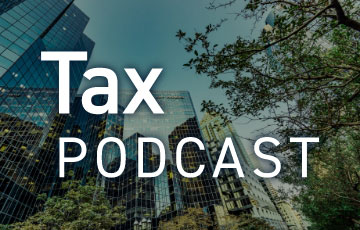The Committee on Ways and Means (W&M), the House of Representative’s tax writing body, unveiled proposed legislative text for its portion of the Republicans’ sweeping tax and spending bill. The legislative language was released in two stages: an initial package that primarily consists of extensions to Tax Cuts and Jobs Act (TCJA) provisions, followed by an “amendment in the nature of a substitute” that includes other Republican priorities.
Chairman Jason Smith (R – MO) announced W&M will meet to mark up the bill text beginning on May 13 at 2 P.M.
Structure and Scope
Together, the initial package and amendment proposals include:
- $3.8 Trillion in Net Tax Cuts: Because other House committees have struggled to exceed their required minimum spending cuts, W&M is limited to authorizing approximately $4 trillion in net tax cuts under their budget resolution; the score on the current proposal came in under budget at $3.8 trillion. For more information on the House’s reconciliation instructions, see Tracking Tax Reform: Senate Drafts Budget Resolution.
- Varying Expiration Dates: One of the ways Smith and W&M adjusted to provide a more limited tax plan is to enact certain provisions on a temporary basis. Some proposed tax cuts are drafted as permanent provisions, while others would only be implemented temporarily.
Key Tax Provisions Included
Below is a high-level summary of the key tax provisions contained in the W&M legislative text. Please keep in mind, the following are only proposals at this point:
Business Provisions
- Qualified Business Income (QBI) Deduction (Section 199A): The QBI deduction provision proposes a permanent extension, an increase in the deduction from 20% to 23%, and a new set of rules for calculating the phaseout, effective beginning in 2026.
- Research & Experimental Expenditures (Section 174): The proposal would suspend the capitalization requirement for domestic expenditures from tax years 2025 through 2029.
- Bonus Depreciation: This extends 100% bonus depreciation on qualified property from January 20, 2025, through the end of 2029. The proposal also provides for elective 100% depreciation for qualified production property — nonresidential real property that meets specific requirements
- Business Interest Expense Limitation: Businesses would be able to use the EBITDA formula to calculate adjusted taxable income, rather than the more restrictive EBIT for tax years 2025 through 2029.
- Pass-Through Entity Taxes (PTET): Pass-through entities would be required to separately state and no longer deduct specified taxes. Entity-level payments from PTEs that meet certain criteria would avoid the individual SALT cap.
- Excess Business Losses (EBLs): The limitation on business losses would be made permanent, and previously disallowed losses will need to be included in the calculation.
- Opportunity Zones (OZs): Ends current Opportunity Zones designations at the end of 2026, and creates a second round of OZs, with some adjustments, set to run from 2027 through 2033.
- Employee Retention Credit (ERC): This would retroactively terminate ERC claims submitted after January 31, 2024, increase penalties for abusive transactions and extend the statute of limitations.
Tax Exempt Organizations
- Tax Exempt Organization Proposals: Proposals include an expansion of the excise tax on private colleges and universities, as well as on private foundations, effective in 2026.
- Other Business Proposals: Includes an expansion of Section 179 asset expensing, decreases reporting requirements for third-party settlement organizations, and extends and expands the Low-Income Housing Tax Credit, among others.
International Provisions
- Global Intangible Low-Taxed Income (GILTI), Foreign-Derived Intangible Income (FDII) & Base Erosion and Anti-Abuse Tax (BEAT): The 2026 scheduled changes to these provisions would not take effect. The GILTI rate would retain a 50% deduction, the FDII rate would remain 37.5% and the BEAT rate would remain 10% (all permanently).
- Retaliatory Measures: This would authorize increased tax rates for foreign taxpayers from countries deed to have “unfair foreign taxes.”
Individual Provisions
- Individual Tax Rates: Current tax rates would be made permanent.
- Standard Deduction: The current standard deduction would be made permanent and provide a temporary boost of $1,000 for individual filers and $2,000 for joint filers for tax years 2025 through 2028.
- State and Local Tax (SALT) Cap: Individuals would be limited to $30,000 of SALT deductions (increased from $10,000), subject to phase down above certain income thresholds, effective in 2026.
- Child Tax Credit: The $2,000 child tax credit would become permanent; however, it would temporarily increase to $2,500 for tax years 2025 through 2028.
- No Tax on Tips or Overtime: Provides deductions for qualified tips and qualified overtime compensation for tax years 2025 through 2028.
- Enhanced Deduction for Seniors: From 2025 through 2028, seniors under a certain income threshold would receive an additional $4,000 per filer.
- Other TCJA Individual Provisions: TCJA would generally be permanently extended, including Alternative Minimum Tax thresholds and the treatment of itemized deductions, among others.
- Other New Individual Provisions: W&M has proposed numerous changes for individual taxpayers (most of which are temporary), including an above-the-line charitable deduction, a deduction for auto loan interest for certain vehicles and changes to Section 529 plan rules.
Trust & Estate Provisions
- Estate and Gift Tax Exemption: Beginning in 2026, proposals would permanently increase the lifetime exclusion to $15 million, indexed for inflation.
Inflation Reduction Act (IRA) Provisions
- Terminated Credits: Clean vehicle credits, residential energy credits, and the hydrogen production credit (Section 45V) would be terminated at the end of 2025.
- Phaseout of Credits: The proposal would phase out the clean electricity production credit (Section 45Y), the clean electricity investment credit (Section 48E), the zero-emission nuclear power production credit (Section 45U), and part of the advanced manufacturing credit (Section 45X) by the end of 2031. It also restricts the carbon oxide sequestration credit (Section 45Q). The transferability for these credits would also end prematurely — some within two years of enactment and others by the end of 2027.
- Clean Fuel Production Credit: This would end transferability after 2027.
Debt Limit
The bill also proposes a $4 trillion increase to the statutory debt limit, which is in line with the House budget instructions but falls short of the Senate’s $5 trillion target.
*This list is not all-inclusive. We will provide additional details on the contents in the coming days. The introduction of these provisions by W&M does not guarantee they will be included in a final tax package.
Next Steps in the Reconciliation Process
Ways and Means is one of the final House committees to consider its portion of the bill. The level of tax cuts W&M can approve is dependent upon the level of savings other committees achieve. You can find more information on the budget resolution and reconciliation instructions visit Tracking Tax Reform: Congress Adopts Compromise Budget Resolution.
During the committee’s markup, members will debate the bill, consider amendments (many of which will come from Democrats and will be swiftly defeated), and vote on the proposal. If Smith and the Republican committee members are successful in advancing their proposal out of committee, they will report their recommendations to the House Budget Committee, which will compile all the proposals into a single bill for consideration by the full House.
It is important to again note that the W&M proposals are not certain to become law. Speaker Mike Johnson (R – LA) has a diverse conference with varying priorities and an extremely thin three-vote margin. The SALT cap continues to be a major point of contention in the House; the W&M proposal sets the SALT cap at $30,000 and includes an income cap, an offer Republican SALT caucus members rejected next week. Currently, House leadership is planning to go ahead with the W&M markup in hopes of passing the bill out of committee; they hope to resolve the lingering SALT issue after the markup and before House votes on the full bill.
Even if the House of Representatives adopts the overall bill, the Senate is likely to make adjustments or release its own version of a bill, especially considering the significant differences in reconciliation instructions between the two chambers.
Find more detail on the reconciliation process in Tracking Tax Reform: The Reconciliation Process.
Stay Tuned for Additional Details
Cherry Bekaert’s Tax Policy and National Tax Office teams will provide a more detailed look at W&M proposed legislation as well as any changes that result from the committee’s markup in the coming days.
Your Guide Forward
As Congress navigates a potential tax reform bill, Cherry Bekaert will continue to bring you the latest developments and insights.






